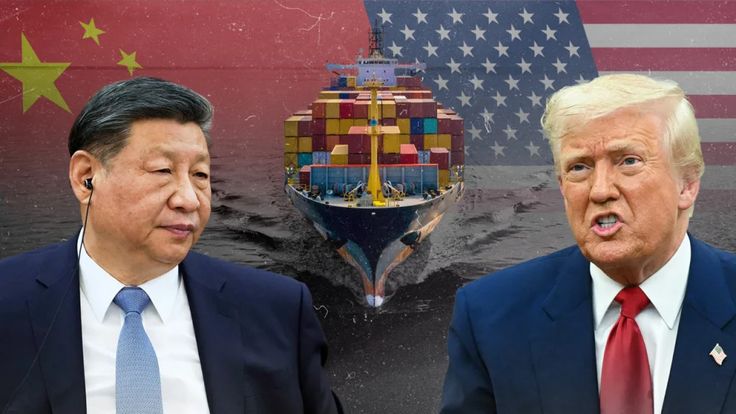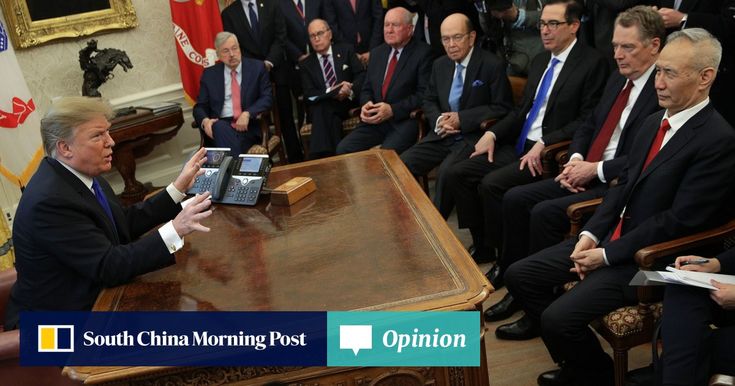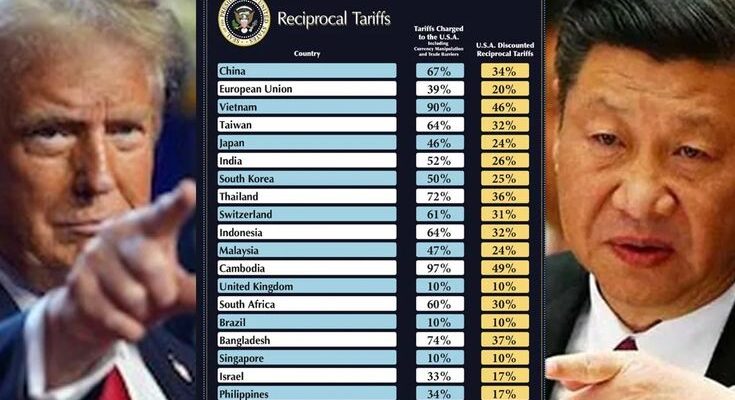The Origins of the Conflict
To understand the trade war, it’s essential to explore the history behind the U.S.-China economic relationship. For decades, the U.S. has maintained a significant trade deficit with China, meaning the U.S. imported far more goods from China than it exported to it. In 2018, that deficit reached a peak of over $419 billion. While some of this imbalance is natural in a global economy, American policymakers have long argued that China gained an unfair advantage through a combination of currency manipulation, heavy government subsidies, and weak enforcement of intellectual property protections.
These grievances simmered for years but erupted into full-blown conflict under the administration of President Donald Trump, who made addressing trade deficits and perceived unfair trade practices a central part of his economic policy.

Timeline of the Trade War
The trade war officially began in March 2018, when the Trump administration announced tariffs on Chinese steel and aluminum. China retaliated with tariffs of its own, targeting American exports like soybeans, automobiles, and whiskey. What followed was a tit-for-tat escalation, with both countries imposing multiple rounds of tariffs worth hundreds of billions of dollars.
Here are some key moments in the trade war timeline:
- March 2018: U.S. imposes tariffs on steel (25%) and aluminum (10%), citing national security.
- July 2018: First round of tariffs on $34 billion worth of Chinese goods goes into effect; China responds with equivalent tariffs.
- September 2018: U.S. announces tariffs on $200 billion more in Chinese goods; China retaliates.
- December 2018: Temporary truce declared at G20 summit in Argentina.
- May 2019: Talks stall; more tariffs imposed.
- January 2020: Phase One deal signed, offering a partial de-escalation.
The Phase One agreement required China to increase purchases of U.S. goods and services by at least $200 billion over two years and address some issues related to intellectual property and forced technology transfers. In return, the U.S. agreed to reduce some tariffs but kept many in place, signaling a fragile truce rather than a full resolution.

Key Issues Behind the Trade War
- Trade Imbalance: The large trade deficit between the U.S. and China has been a central grievance for years. While trade deficits are not inherently bad, critics argue that China’s policies have artificially tilted the playing field.
- Intellectual Property Theft: The U.S. accuses China of widespread theft of American intellectual property, including software, patents, and business secrets, often requiring foreign firms to share proprietary information to operate in China.
- Forced Technology Transfers: Many U.S. companies have complained that to access the Chinese market, they’ve been forced into joint ventures where they are pressured to hand over valuable technologies.
- State Subsidies and Market Access: China’s economic system includes significant state support for key industries, including telecommunications, steel, and solar energy. This can undercut competition and create distortions in global markets.
- Geopolitical Rivalry: Beyond economics, the trade war also reflects growing competition between the U.S. and China for global leadership—especially in areas like 5G, artificial intelligence, and clean energy.

Economic Impact of the Trade War
The trade war has had widespread consequences on both economies and beyond:
- U.S. Farmers and Consumers: American farmers were hit hard, particularly soybean producers, who lost access to their largest export market. The U.S. government issued billions in aid to offset losses. Meanwhile, tariffs on Chinese imports led to higher prices for American consumers and businesses.
- Chinese Exports: Chinese manufacturers suffered as U.S. demand fell, leading some companies to relocate production to other countries like Vietnam and India.
- Global Supply Chains: The conflict disrupted global supply chains, pushing many multinational corporations to reconsider their reliance on Chinese manufacturing.
- Stock Markets: Market volatility increased significantly during the height of the trade war, with major indices reacting sharply to news of tariff announcements or trade negotiations.
- Global Economy: The International Monetary Fund and other global institutions revised growth forecasts downward, citing uncertainty caused by the U.S.-China tensions.

Shifts Under the Biden Administration
President Joe Biden, who took office in January 2021, inherited a trade policy still dominated by Trump-era tariffs and tensions. While he criticized Trump’s approach, the Biden administration has largely maintained many of the tariffs, using them as leverage while seeking broader international coalitions to challenge China on trade and human rights issues.
Rather than continuing the unilateral tariff-heavy approach, Biden has focused more on rebuilding domestic competitiveness through policies like the CHIPS Act, investing in semiconductors, and the Inflation Reduction Act, promoting clean energy and U.S.-based manufacturing. However, the broader rivalry with China remains a central theme.
The Role of Technology
One of the most critical battlegrounds in the trade war has been technology. The U.S. has taken steps to block Chinese tech firms like Huawei and ZTE from accessing American technology and infrastructure, citing national security concerns. In turn, China has doubled down on its own efforts to become self-reliant in key sectors like AI, 5G, and semiconductors.
This aspect of the trade war has evolved into what some call a tech cold war, with each side racing to gain dominance in the technologies that will define the future.

The Global Response
Other countries have been forced to navigate the trade war carefully. Some, like Vietnam and Mexico, benefited as companies moved production out of China to avoid tariffs. Others, particularly in Europe, were caught between two giants, trying to balance trade with both powers without alienating either.
Organizations like the World Trade Organization (WTO) have struggled to mediate the conflict, exposing the limitations of global trade rules in the face of rising nationalism and economic protectionism.
What’s Next?
The U.S.-China trade war is far from over. Though some tensions have eased since the height of the conflict in 2018–2020, the underlying issues remain. Both nations are recalibrating their economic strategies, and the world is watching closely.
Some analysts predict a continued decoupling of the two economies, especially in technology. Others hope for a more stable equilibrium through new negotiations or multilateral frameworks. What’s clear is that the trade war has permanently changed how global trade is discussed and conducted.
Conclusion
The trade war between the United States and China is not just about tariffs or deficits—it’s a reflection of deeper economic and geopolitical tensions. What began as a battle over trade has grown into a complex competition over technology, ideology, and global influence. As both nations continue to navigate this delicate relationship, the rest of the world remains both impacted and deeply invested in the outcome.



